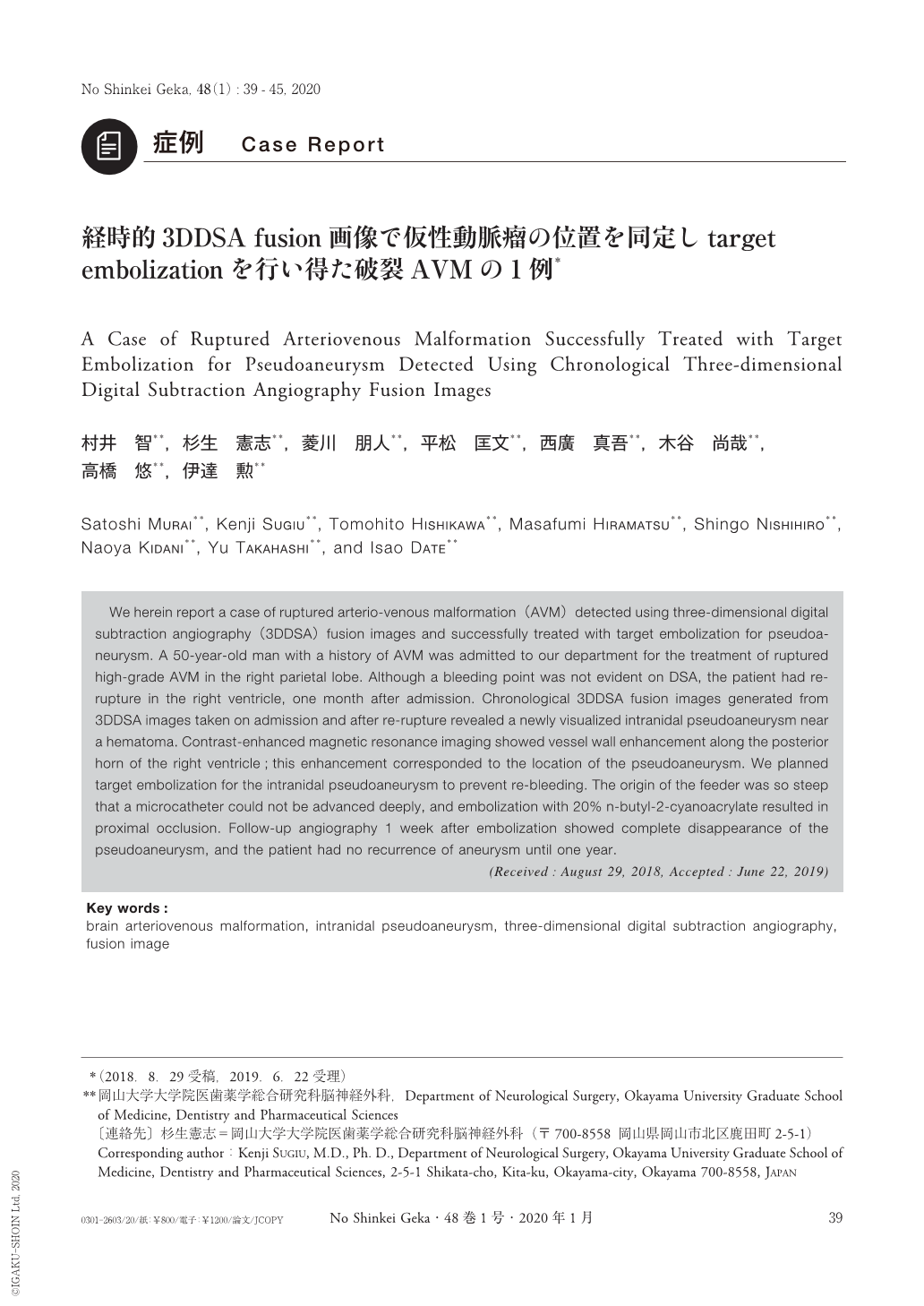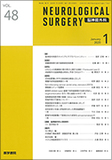Japanese
English
- 有料閲覧
- Abstract 文献概要
- 1ページ目 Look Inside
- 参考文献 Reference
Ⅰ.はじめに
脳動静脈奇形(arteriovenous malformation:AVM)は約半数が出血で発症し,出血源としては動脈瘤が関連することが多い1,9,13).また,出血例では1年以内の再出血率が6〜15%と非常に高く,再出血を予防することが肝要である2,3,17).しかし,広範なnidusを伴うAVMの場合,開頭術や血管内治療,放射線治療を駆使しても根治することはしばしば困難である.そのため,出血点となる動脈瘤を正確に同定してtarget embolizationを行うことで,出血リスクを低減することができる6,11).
近年,2つの異なる血管のthree-dimensional digital subtraction angiography(3DDSA)画像を組み合わせた3DDSA fusion画像は,脳血管病変,特にAVMや硬膜動静脈瘻(dural arteriovenous fistula:dAVF)において血管構築を理解し,治療計画を決定する上で有用なツールとなっている.今回,塞栓術1カ月前と術直前の3DDSAをfusionさせた経時的3DDSA fusion画像(chronological 3DDSA fusion images)により,新規に同定された仮性動脈瘤を塞栓し得た破裂AVMの1例を報告する.
We herein report a case of ruptured arterio-venous malformation(AVM)detected using three-dimensional digital subtraction angiography(3DDSA)fusion images and successfully treated with target embolization for pseudoaneurysm. A 50-year-old man with a history of AVM was admitted to our department for the treatment of ruptured high-grade AVM in the right parietal lobe. Although a bleeding point was not evident on DSA, the patient had re-rupture in the right ventricle, one month after admission. Chronological 3DDSA fusion images generated from 3DDSA images taken on admission and after re-rupture revealed a newly visualized intranidal pseudoaneurysm near a hematoma. Contrast-enhanced magnetic resonance imaging showed vessel wall enhancement along the posterior horn of the right ventricle;this enhancement corresponded to the location of the pseudoaneurysm. We planned target embolization for the intranidal pseudoaneurysm to prevent re-bleeding. The origin of the feeder was so steep that a microcatheter could not be advanced deeply, and embolization with 20% n-butyl-2-cyanoacrylate resulted in proximal occlusion. Follow-up angiography 1 week after embolization showed complete disappearance of the pseudoaneurysm, and the patient had no recurrence of aneurysm until one year.

Copyright © 2020, Igaku-Shoin Ltd. All rights reserved.


